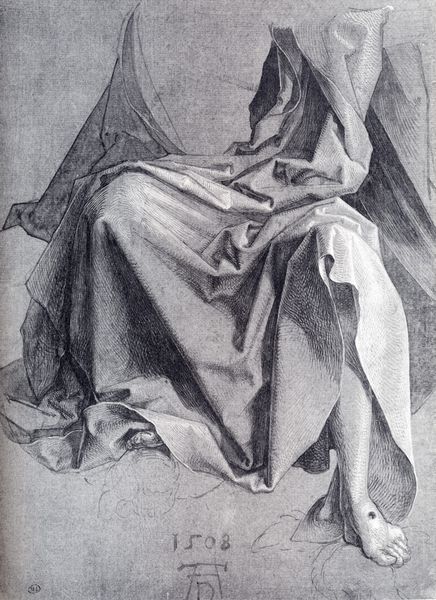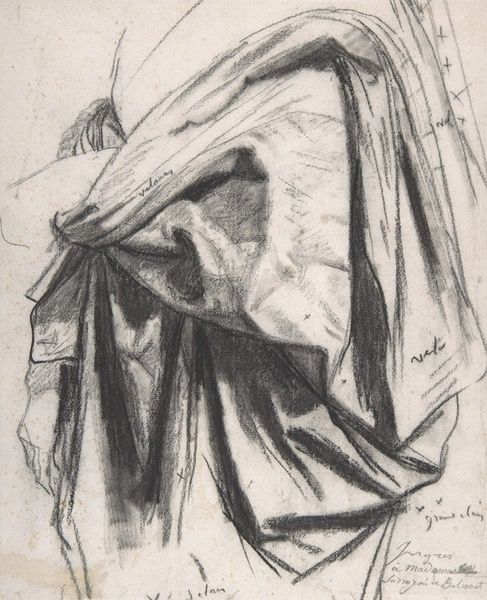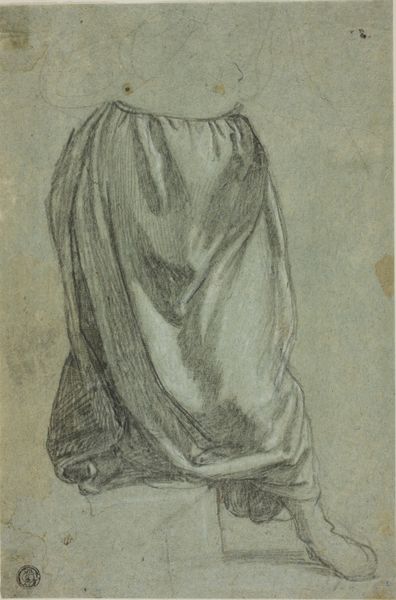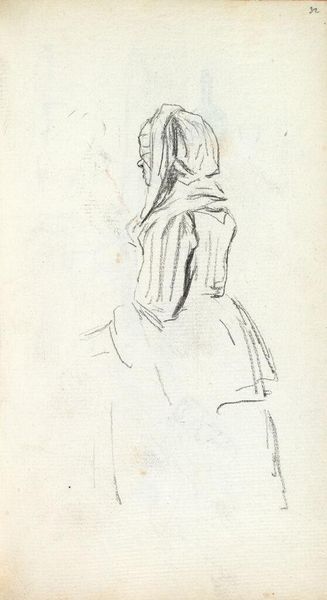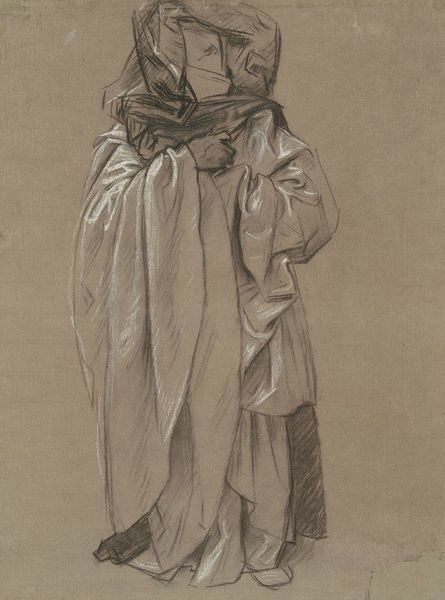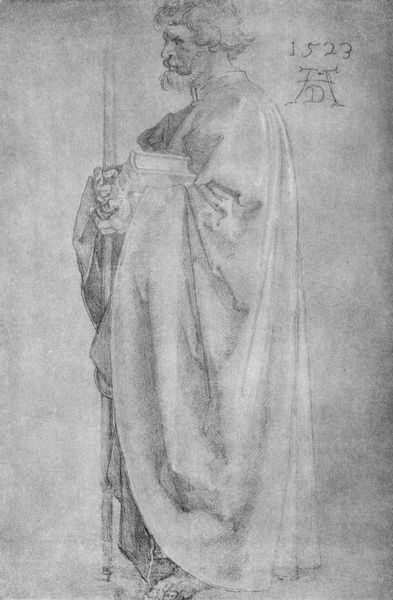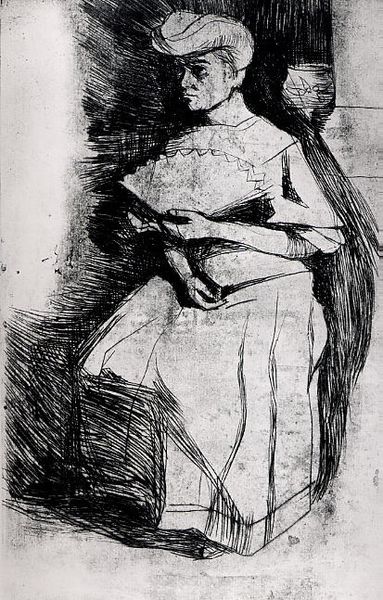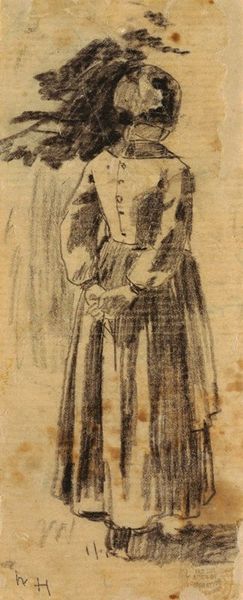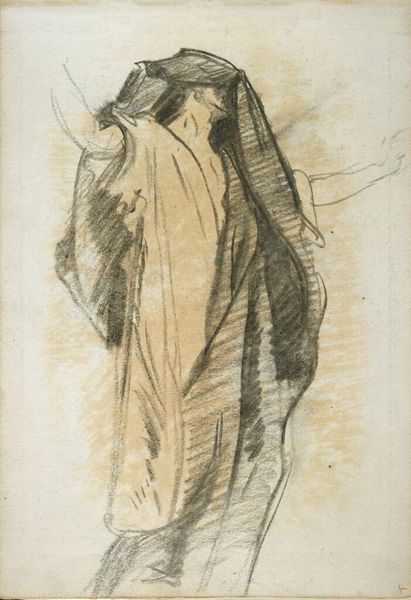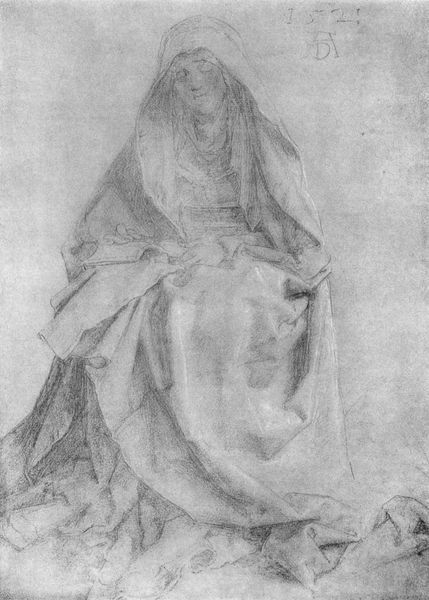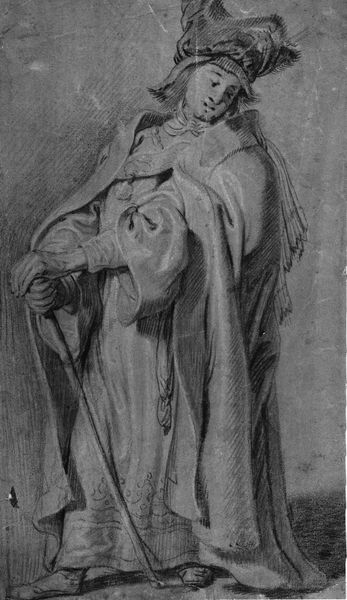
drawing, paper, charcoal
#
drawing
#
charcoal drawing
#
figuration
#
paper
#
form
#
11_renaissance
#
pencil drawing
#
charcoal
#
italian-renaissance
Dimensions: 31.9 x 21.8 cm
Copyright: Public domain
Curator: What strikes me immediately is the dramatic interplay of light and shadow. It's like observing a storm cloud. Editor: Indeed. This drawing, created around 1480 by Leonardo da Vinci, now resides in the Louvre. The artwork is titled "Drapery for a seated figure", and it showcases da Vinci's mastery, achieved simply with charcoal on paper. Curator: It's fascinating how charcoal, a seemingly basic medium, can render such voluminous forms. You almost feel you could reach out and grasp the fabric. I also wonder what type of individual or class wore this style of clothing? Editor: Such drawings were indeed crucial. Da Vinci likely made them in preparation for larger compositions. Note how it moves beyond merely representing fabric; it’s an exploration of form, weight, and shadow. There's an intellectual engagement evident here, driven by that Renaissance desire to investigate the world empirically, through acute observation. Curator: I agree. There's a scientific quality to the precision in his handling of light and form; that objective exploration reminds me of 15th-century Italian academia’s emphasis on rational thought. You almost wonder if this kind of knowledge helped reinforce existing notions of social power, particularly within artistic circles. I mean, this is the same man who developed siege weaponry after all. Editor: Absolutely. It makes you appreciate that artists such as da Vinci were celebrities even in their own time. It's really incredible that this artwork—its composition, really—remains influential centuries later. This sketch exemplifies a timeless method. Curator: Absolutely, there are socio-economic implications even within formal drapery studies such as this piece. These depictions don't simply exist in a vacuum. Editor: Agreed. It allows us to witness da Vinci's brilliant mind at work and recognize just how much observation impacts even society’s most pressing artistic developments.
Comments
No comments
Be the first to comment and join the conversation on the ultimate creative platform.
